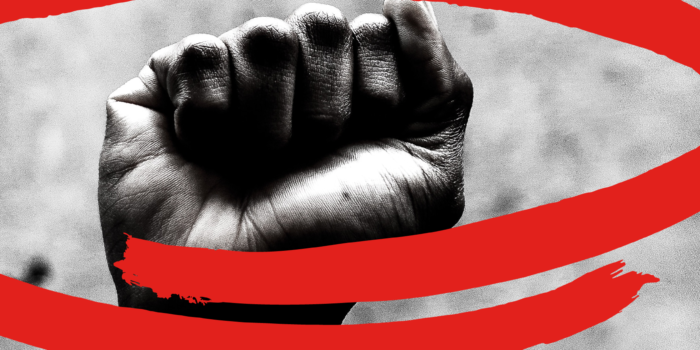A simple way to create better meetings, events, and experiences
In the fall of 2018 the Center for Constitutional Rights launched their new brand identity at an event in New York City. Guests were greeted by a multitude of sights, sounds, and activities that made the event memorable and fun– from temporary tattoos and signature drinks to speakers, activities, and other powerful communications about the Center’s work. The buzz lasted for months and, more importantly, it made a powerful and positive impression on new and old supporters of the Center’s work alike.



What does it take to create a transcendent experience like that? A lot.
Thousands of details must assemble to create this optimal effect. Every detail attendees are likely to see, smell, hear, and do are considered. Staff are trained, coached, managed. From the attendee’s point of view, it may have appeared effortless– just a fun night out for a great cause. But an enormous behind-the-scenes effort is made to create an experience that feels that flawless and smooth.
Taking a page from the theater: creating magical experiences and moments
I’ve heard the theater terms “front stage” and “backstage” applied to work in several places in the business world, including a program for entrepreneurs called “Strategic Coach,” articles, and more. But these terms aren’t often used in the nonprofit sector.
In most workplaces, front stage activities occur with participants, visitors, donors, funders, and other audiences. During front stage moments, you strive to create an optimal experience–one where everything runs smoothly. Backstage activities are the actions that must occur behind-the-scenes in order to create that amazing front stage experience.
Walt Disney’s vision for Disneyland (and subsequent Disney properties) are often-used examples of the front stage/backstage concept. You’ll never see a Disney park employee eating, a costumed character speaking, or off-duty workers taking off their uniforms in one of the Disney parks. That’s because an elaborate network of tunnels and strict codes of conduct ensure that any experience that could spoil the “Disney magic” (front stage experience) happens out-of-sight backstage.
Once you’re looking for it, the front stage / backstage framework is easy to apply to all sorts of experiences we regularly have, especially in high-end and luxury contexts.
Front stage isn’t a fixed place, nor is it the same for everyone. Much like strategy, it shifts based on your vantage point, can have multiple audiences, and can be fluid. In the nonprofit sector, it’s most commonly brought into practice with galas and other events. From the invitation to the post-event follow up, every effort is made to create a seamless front stage experience for donors and prospects. Donors remember a great evening for a great cause. The staff remembers the exhausting, all-consuming work that was necessary backstage. Front stage moments also include how people are greeted when they arrive on-site, the spaces they see, your social media streams, and even your organization’s voice mail system.
Beyond the gala
Nonprofit leaders don’t typically consider meetings important front stage communication experiences, but they should. For the staff, most meetings, presentations, and interactions with clients, board members, donors, and key partners should be considered front stage moments too; these are primary opportunities to impress and inspire confidence.
Imagine you’ve been recruited to join a nonprofit board. There are no formal onboarding materials, but a member of the staff offers to provide an overview of programs before your first board meeting. They are late for your call and a bit disorganized— it’s clear they haven’t put much thought or prep into the conversation. Other calls and meetings also seem a bit disorganized. You begin to form an impression that the staff are busy and capable, but not particularly well-organized. When it’s time to bring your personal connections to the table, you pause. Will this staff make you look good or will others also sense the staff’s disarray?
For board members, most meetings with staff generally are backstage experiences. But when a major donor, funder, or important sector leader joins the board meeting then all the board members are suddenly front stage too, trying to create a strong positive impression for the guest-of-honor.
The stronger the front stage experience your organization creates and the better the follow-up, the more confident your board, donors, clients, members, and other key audiences will feel about your work. That confidence will inspire them to bring their own A-game and follow through.
Creating a strong front stage experience isn’t solely the purview of communications; everyone can play a role in ensuring your organization puts its best foot forward. Your communications team is, however, uniquely qualified to create stronger front stage experiences.
Creating better front stage experiences
Look through the eyes of your audiences when you’re preparing for events, board meetings, and other moments where the front stage experience people will have with your organization matter.
Consider mapping the moments, but informal and formal, that serve as front stage experiences with your organization’s primary audiences. For each important front stage experience consider how each sensory touchpoint helps. What experiences are you creating for your audiences? What’s getting in the way of them having the smoothest or best experience they can with your organization?
Bringing this language to your organization can help raise consciousness about the experiences you create, too– and help everyone from the executive director to a recent entry-level hire understand how they contribute to the organization’s brand, voice, and communications.
Start asking yourself, “How can we make this a better front stage experience?” and you’ll see the results immediately. You’ll find this simple framework helps you turn throw-away moments and meetings into on-brand, positive experiences.




